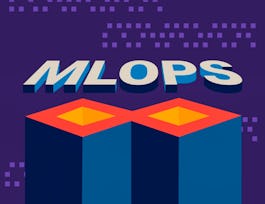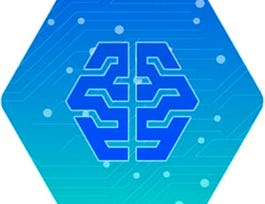With the paradigm shift of Digital Transformation in industries, there exists a huge volume of digital data in cloud storage about the Men, Materials and Machines of the organization. This data incurs a lot of information which could be used for process planning, predictive failures and business optimization. This course aims to equip the learners with various strategic principles of Artificial Intelligence theory which helps to extract such information from the pool of available data. The reach of AI in every area is consistently growing along with the features of programming. The course introduces appropriate programming skills blended in the modules and the learners will be able to learn by doing lots of practice problems. The long-term vision of AI, with Edge operations are explained in the course along with the principles required in implementing Edge AI. The learner can distinguish and will be able to segment the cloud and edge-based operations appropriately for the real-world problems. The different exercise problems with relevant software and hardware architecture support the learning of Edge AI with suitable metrics. On the whole the learners will get an exciting journey of understanding and applying AI algorithms, processing the algorithms for edge and implementing sample edge AI solutions. Edge AI products available in the market are introduced to the learners and this provides the learners with an ability to map their AI skills with suitable upcoming career options.



AI Principles with Edge Computing
This course is part of Intelligent Digital Factories Specialization

Instructor: Subject Matter Expert
Sponsored by Syrian Youth Assembly
Recommended experience
Details to know

Add to your LinkedIn profile
6 assignments
See how employees at top companies are mastering in-demand skills

Build your subject-matter expertise
- Learn new concepts from industry experts
- Gain a foundational understanding of a subject or tool
- Develop job-relevant skills with hands-on projects
- Earn a shareable career certificate


Earn a career certificate
Add this credential to your LinkedIn profile, resume, or CV
Share it on social media and in your performance review

There are 6 modules in this course
By the end of this module on Artificial Intelligence and its Next Wave -Edge Computing, learners will be able to :Understand the scope of AI and Edge Computing; Able to acquire the skills in industries using the Edge AI technology; Able to interpret the role of edge computing in IoT
What's included
20 videos2 readings1 assignment1 discussion prompt
By the end of this module on Python Demos and Case-Studies on Machine Learning (ML) Algorithm Fundamentals, learners will be able to: interpret errors in machine learning, such as bias and variance; Gain insights of implementing ML in real-time domains such as healthcare, banking, and industries; Acquire the capability to perform Exploratory Data Analysis (EDA) processes using the Python programming language; Develop the skills to model ML algorithms for predicting lung cancer disease
What's included
23 videos1 assignment
By the end of this module on Demonstrating Unsupervised & Reinforcement Machine Learning Algorithms with Python demos, learners will be able to: Model a k-means clustering algorithm through a demo; Develop an application demo employing DBSCAN clustering on a dataset; Demonstrate the use of COBOTs in industrial automation.
What's included
22 videos1 assignment
By the end of this module on Principles and successful demonstrations of Neural Networks (Text Analytics), learners will be able to: demonstrate digit recognition using MLP and CNN; Develop a Python program to identify overfitting and underfitting issues in an ML model; develop an ML network using the WEKA tool.
What's included
25 videos1 assignment
By the end of this module on Advanced Applications with Deep Learning Networks, learners will be able to: Identify the vanishing and unstable gradient problems in a deep learning model; Apply DL for banana leaf disease detection; Apply CNN for Pneumonia Detection; Model an advanced CNN-based ML system to recognize images
What's included
20 videos1 assignment
By the end of this module on IoT with AI and edge computing, learners will be able to: Understand the working principles of the TinyML system; Identify the need for compression techniques; Interpret High Computing Machine based Edge Architecture; Learn the functionalities of the Arduino IDE and programming on the Arduino Nano BLE development board
What's included
17 videos1 assignment
Instructor

Offered by
Why people choose Coursera for their career




Recommended if you're interested in Information Technology

Google Cloud

Duke University

Google Cloud

Open new doors with Coursera Plus
Unlimited access to 10,000+ world-class courses, hands-on projects, and job-ready certificate programs - all included in your subscription
Advance your career with an online degree
Earn a degree from world-class universities - 100% online
Join over 3,400 global companies that choose Coursera for Business
Upskill your employees to excel in the digital economy



